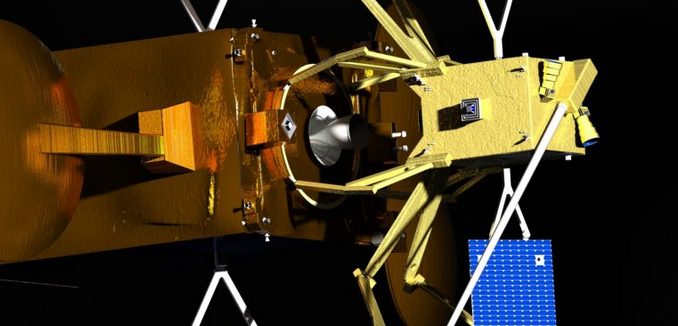What happens when a communications satellite runs out of juice? That’s a problem Effective Space hopes to address with its life-extending Space Drone.
Effective Space, which has its R&D center in Tel Aviv and headquarters in London, last week signed a $100 million multi-year contract with a major regional satellite operator and hopes to launch two Space Drones by 2020.
The 400-kilogram Space Drone is designed to work with satellites that are running low on fuel but are otherwise operational. A Space Drone will dock with an existing satellite and provide station-keeping and altitude-control capabilities.
Space Drone will use its own electric propulsion to maneuver into position with the target satellite, then take over maneuvering the satellite itself – either for the long-term or for shorter activities (such as moving an aging satellite into a “graveyard orbit”).
Effective Space’s managing director is Daniel Campbell, previously head of the connected car group at Israeli electric car startup Better Place. Effective Space was started in 2013 by Arie Halsband, former general manager of the space division at Israel Aerospace Industries.
Halsband said that Effective Space technology “enables satellite owners to maximize the lifespan of their hardware, and run expensive fuel resources to zero before decommissioning.”
Effective Space has signed letters of intent with several customers, and will be looking to raise a Series B round later in 2018.
Keeping satellites already in orbit happy and humming is turning into a competitive space, so to speak. Space Logistics, a subsidiary of Orbital ATK in the United States, expects to launch its first life-extension spacecraft this year. Campbell said Space Drone would be smaller and cheaper than the Space Logistics model.
As the space around the earth becomes more and more cluttered with satellites, including very small nano-satellites, making better use of existing assets may help minimize the very real potential for collisions with an estimated 170 million pieces of space debris floating in the earth’s upper atmosphere.
(via Israel21c)
[Photo: Israel21c]




